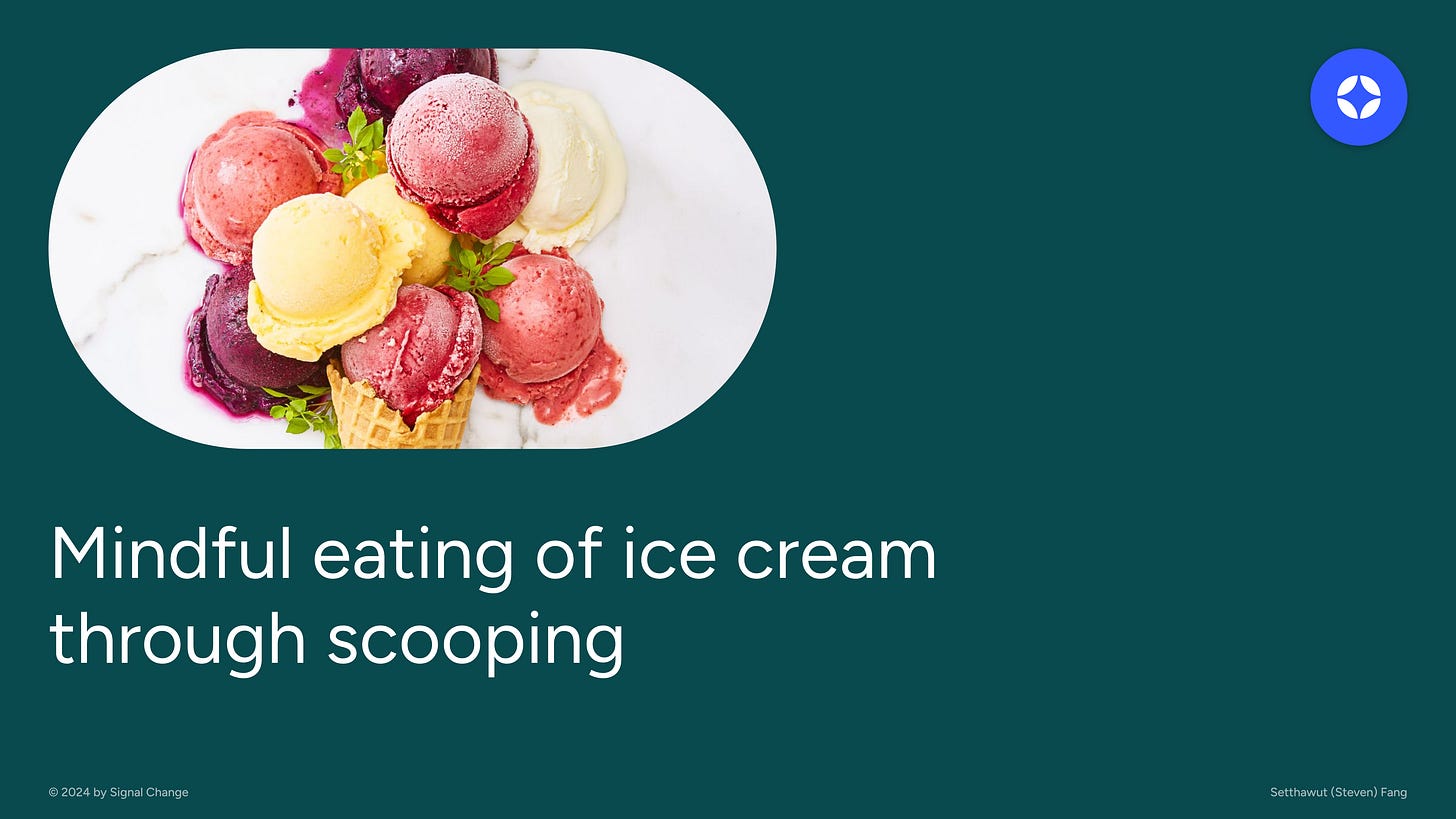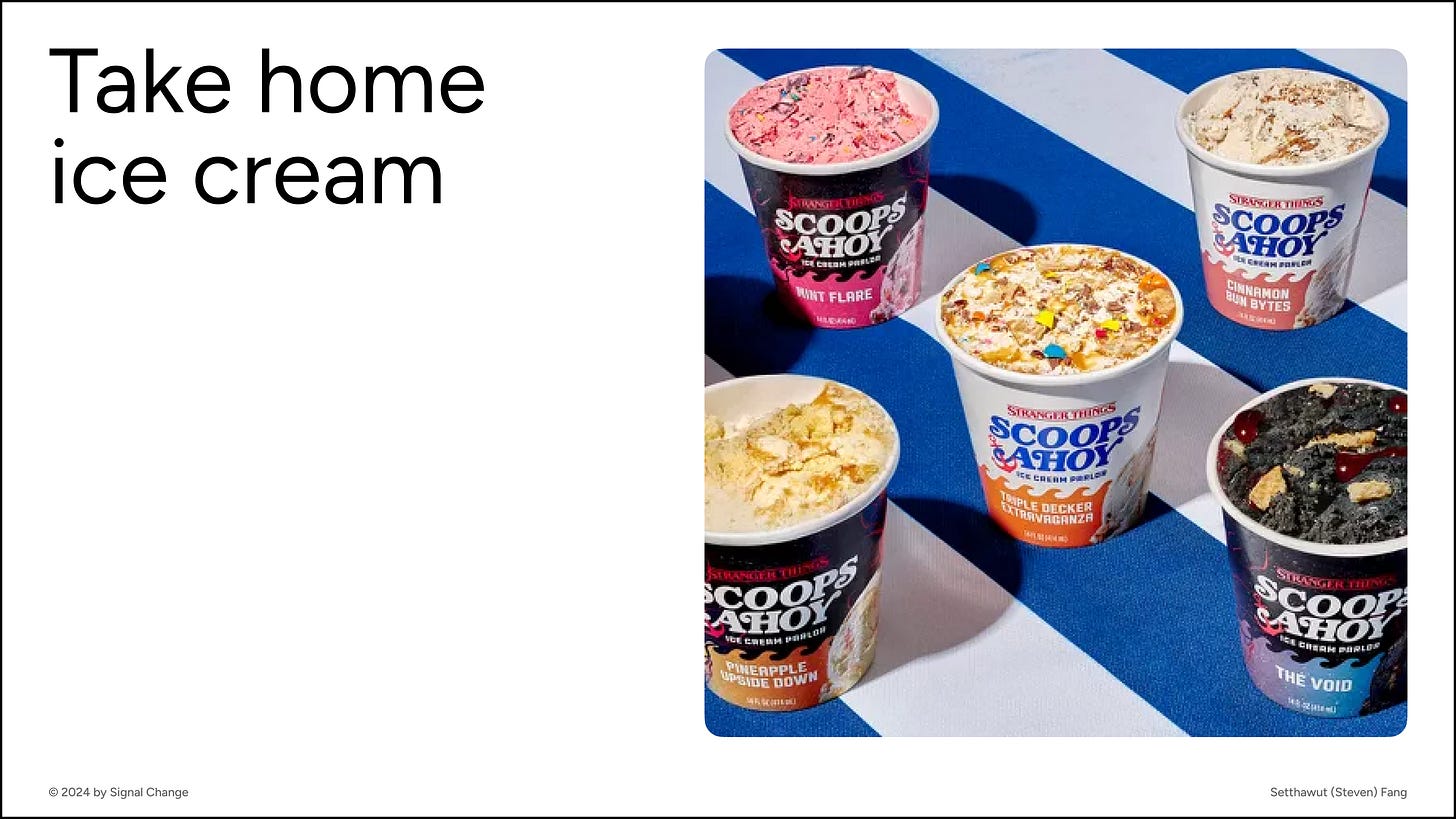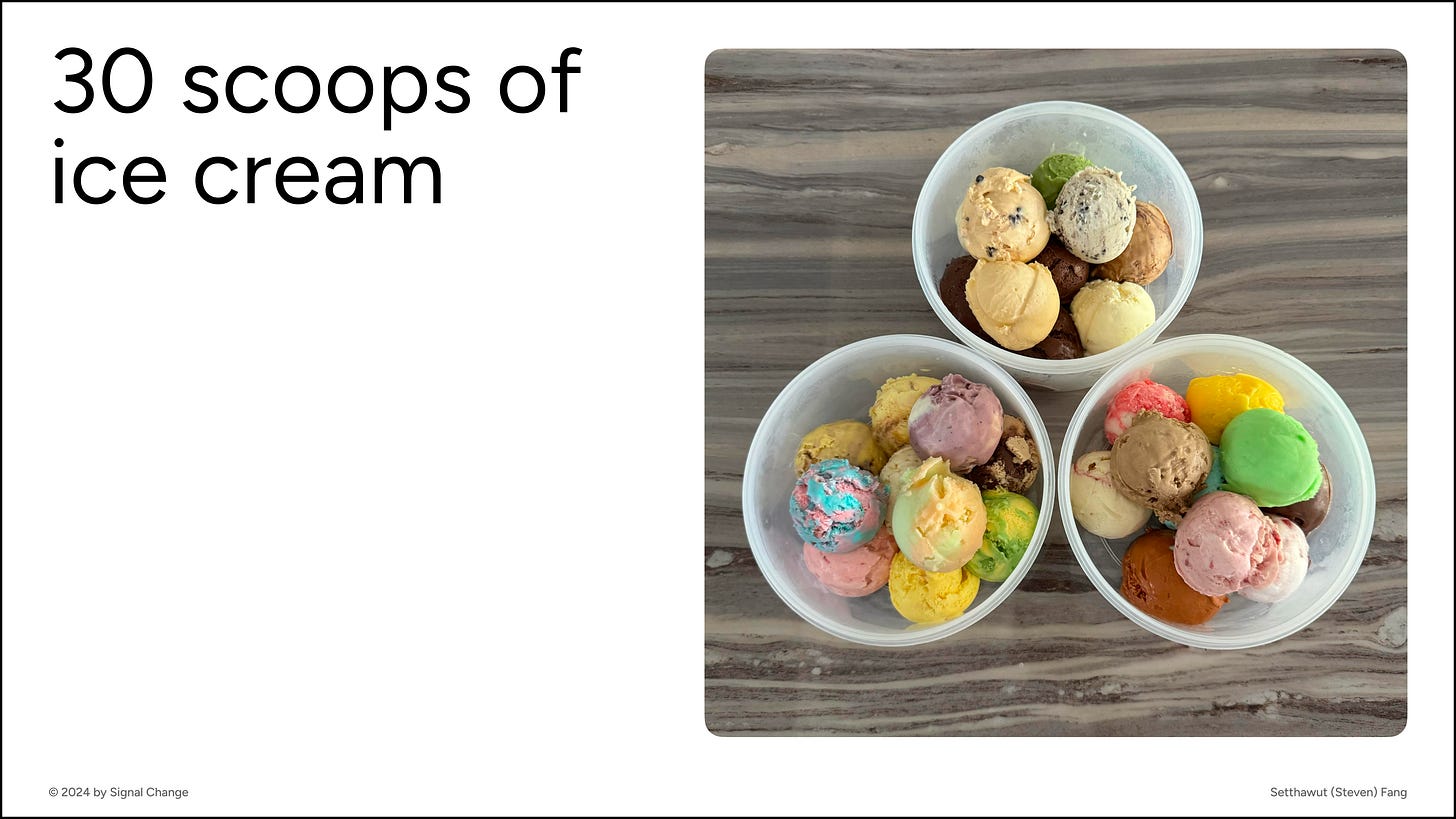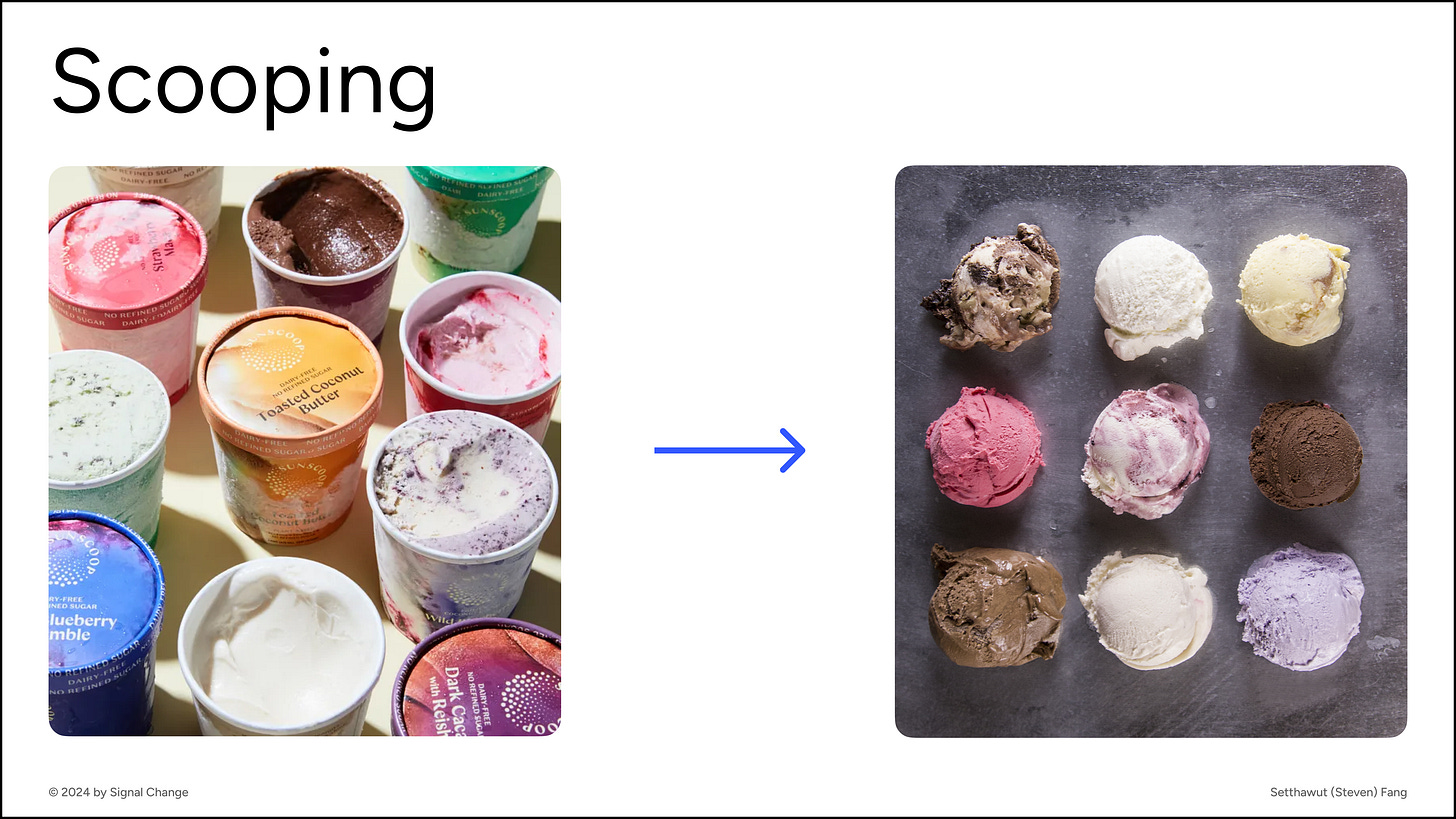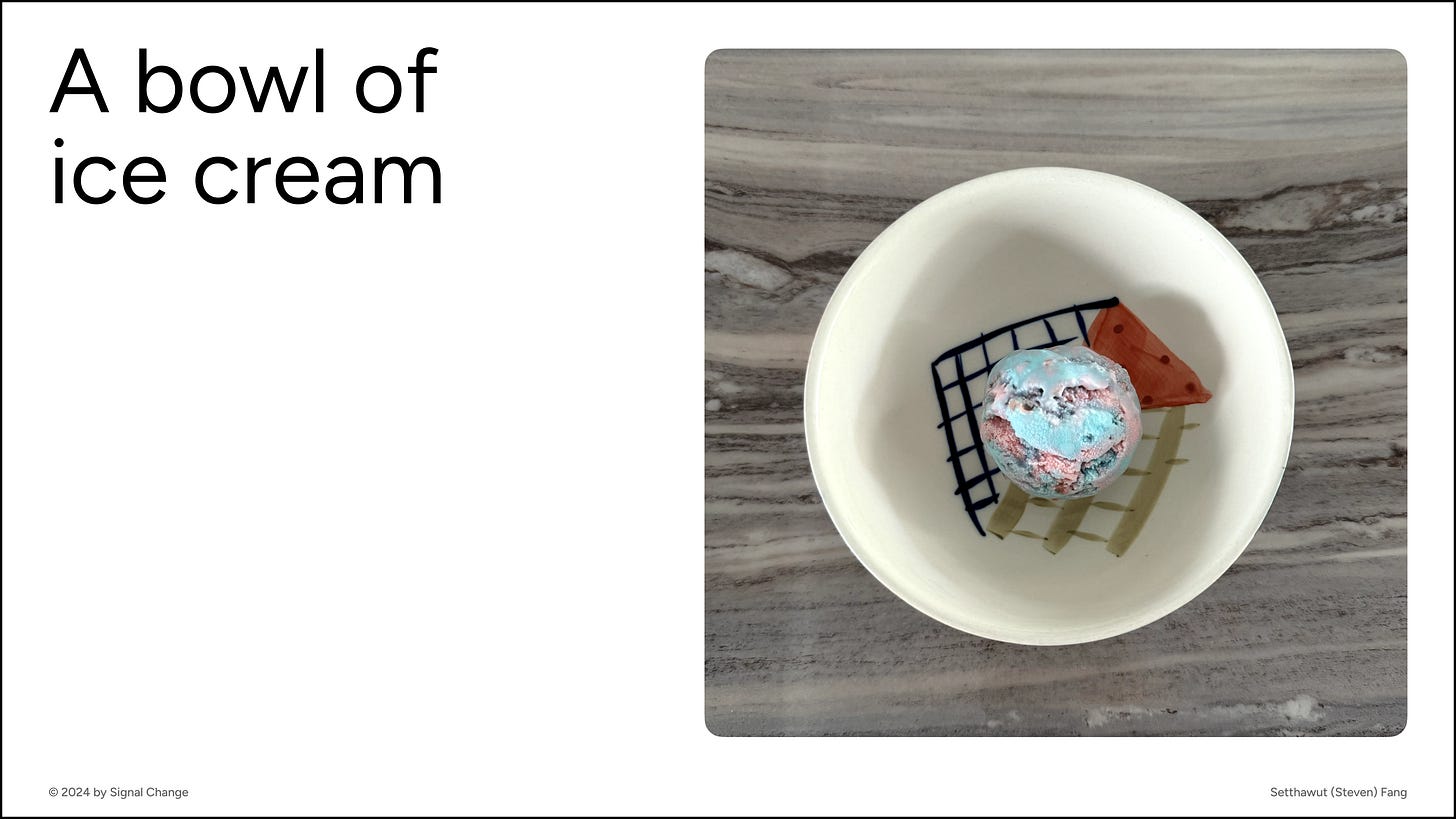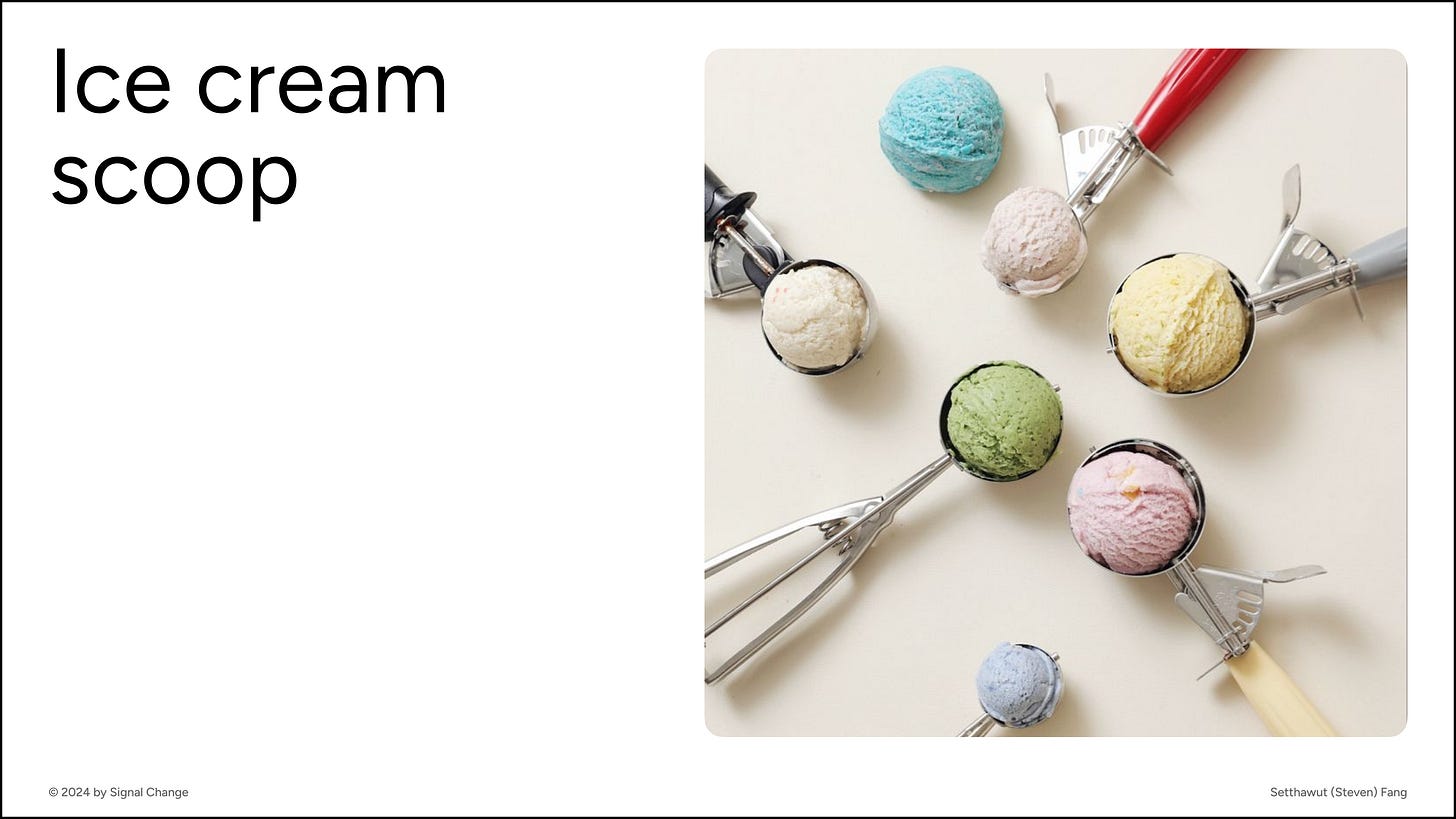Mindful eating of ice cream through scooping
A personal story on how I overcome my bad habit of overeating ice cream through behavioral science
The bad habit
Have you ever craved for a favorite food or snack of yours and you promised yourself that you will only take a few bites? Well, we all know how that goes — the entire thing is finished before you know it.
Majority of people are aware about the benefits of healthy eating such as obesity prevention, reducing the risk of developing type 2 diabetes, and improving our health in general. Yet, many people still often over consume unhealthy food on a daily basis.
The temptation of unhealthy foods and snacks is hard to resist. They are engineered to be highly palatable, making them extremely enjoyable and hard to resist. They also provide instant gratification, the immediate pleasure and satisfaction that is present in unhealthy foods and snacks also makes it more tempting than healthier options that might not have the same immediate impact. Speaking of instant gratification, many people who over consume them also get instant regret, they know what’s coming and they often beat themselves up afterwards for not making the smartest food decisions.
So what should we do? Should we completely stop consuming unhealthy food? The reality is that eating unhealthy food in moderation is totally okay. Putting the focus towards balancing our diet is a much more sustainable and realistic approach as opposed to trying to completely eliminate unhealthy foods.
Today, I want to share a few simple tricks that I personally use to overcome my own bad eating habits. Enter ice cream, a high calorie dessert that I really really love ever since I was a kid. For as long as I could remember, my love affair with ice cream was unrivaled. Anytime there is ice cream in front of me, I can always finish it (fast) regardless of the amount. When I eat ice cream from a typical ice cream shop, overconsumption is not a problem as I typically would only eat 1 - 2 scoops of ice cream. The real challenge for me is the take home ice cream, those that that come in big containers that we typically crave for during movie nights! You see, regardless of how big or small these ice cream containers are, I almost always can finish it in one go. While they are really delicious, I certainly don’t feel good eating an entire container of ice cream in one go. It’s definitely not good for my long-term health if I keep on indulging in this bad habit.
As a behavioral science practitioner, I was exploring various behavioral methods that I could use in controlling my ice cream consumption. Like many of you reading this, we all have probably searched online at some point to look for tips or advice on building good habits and eliminating bad ones like overeating unhealthy food. However, this advice is often very standardized and generic, and it never seems to work. So instead of blindly following the advice from online, I reflect on my past activities to identify ways to change my current eating behavior and develop healthy eating habits for the future.
Remember when I said earlier that eating ice cream at an ice cream was never a problem for me as I almost always eat only 1 - 2 scoops of ice cream at most. However, when I am at home, I never eat ice cream in scoops. This is because take-home ice cream comes in a container, and I would simply grab a spoon and dig in! Around the time of this realization, it just so happens on Earth Day, Swensen's (an international ice cream chain restaurant founded in America, with a significant presence here in Thailand) was offering a fantastic deal you can get a scoop of their ice cream for around half U.S. dollar but you have to buy at a minimum of 10 scoops. As an avid ice cream lover, I ordered 30 scoops of ice cream from them that day. Coincidentally, I remember they had around 30 flavors of ice cream on that day, so I basically told them to get one of each flavor.
The behavioral solution
Have you ever heard the term “chunking”? A popular cognitive strategy used by students and professionals to improve memory and information processing by organizing individual pieces of information into larger, more manageable units or "chunks." This technique leverages the brain's natural tendency to seek patterns and simplify complex information, making it easier to remember and recall.
Examples of chunking
Phone numbers: Phone numbers are often chunked for easier recall. Instead of remembering the number 8005551212 as ten separate digits, we typically remember it as 800-555-1212.
Learning a New Language: When learning vocabulary in a new language, grouping related words into categories (e.g., foods, colors, animals) can make it easier to remember them.
Studying: Students often use chunking to study for exams by organizing information into themes or topics. For instance, instead of memorizing a list of 20 historical dates individually, they might chunk them into groups based on historical periods or events.
Grocery: To remember a grocery list, we tend to chunk our grocery items into categories such as fruits, vegetables, dairy, and meats. This reduces the cognitive load by transforming a long list into a few meaningful groups.
In our case of eating ice cream, a similar approach to chunking was used. My behavioral solution towards mindful eating of take home ice cream is to eat them in scoops. Instead of simply taking a spoon and eating directly from the ice cream container, I chunk the ice cream into smaller portions through scooping. If you look at the ice cream that I have purchased from the previous photo above, you can see that the ice cream has already been given to me into scoops. This makes it very convenient for me as I could directly eat them from the container as the ice creams have already been separated in scoops.
However, imagine yourself as an avid ice cream lover, eating ice cream directly from a container. Even if it came in scoops, you might still find it extremely difficult to resist the temptation of eating multiple scoops. This is because the ice cream is directly present in front of you, in behavioral science, we call that as salience. Another reason why it's difficult to resist the temptation of eating multiple scoops of ice cream is because the effort required is minimal; we already have a spoon in our hand, and the ice cream is right in front of us.
Hence, I took further steps in making sure I don’t over consume my ice cream by making sure that every time I want to eat the ice cream, I would take a scoop or two and put them in a separate bowl. This way, I remove the salience of having all the ice cream in front of me. Friction has also been created as I would have to get up from a couch, walk to the fridge, take out the ice cream container and put a few more scoops in my bowl.
The outcome
By chunking the take home ice cream into scoops and eating them in a separate bowl, the outcome or impact has been nothing short of transformative. I purchased those 30 scoops of ice cream on Earth Day (April 22), at the time of publishing this article, I still have a few more scoops of ice cream left! From being able to finish an entire ice cream container in one go, to now eating more mindfully and still having some left after a month, it truly is amazing how small changes can have such a big impact on our daily habits, such as eating.
On top of that, by eating the ice cream I bought over a longer span of time, I actually enjoy them even more now. This can actually be explained psychologically with two behavioral science theories.
The first is called the segregation effect, where positive experiences feel better overall when we spread them out. Similar to how learning techniques like spaced repetition help us retain information better, eating our favorite food or snacks across longer periods also makes them taste tastier and more enjoyable.
Secondly, through the practice of mindful eating by consuming the food in smaller portions of servings, it positively enhances the perceived taste and enjoyment. When eating in smaller portions, we take the time to savor and appreciate each bite more. The sensory experience is also heightened as we pay more attention to the flavors, textures, and aromas of the food.
Looking back, I didn’t have to scoop the ice cream myself since it was already served to me that way. However, looking forward, the next time I purchase take-home ice cream that comes in a typical container, I will definitely buy an ice cream scoop to portion it into separate servings. A small investment that will certainly go a long way in controlling my ice cream consumption and improving my overall long-term health.
Conclusion
That's my personal story of applying behavioral science solutions to practice mindful eating and overcome my bad habit of over consuming ice cream. I challenge you to reflect on your own eating habits and consider actionable steps you could take to eliminate bad eating habits and promote mindful eating for your long-term health.
Also, have a think about how commercial brands and restaurants leverage some of the behavioral strategies discussed in this article to get consumers like you to spend more money and to enhance your overall dining experience.
I will expand on this topic and discuss more in future articles, so stay tuned!
Thanks for reading,
Steven
If you enjoyed this reading…
📥 Don’t forget to subscribe (If you haven’t already done so), so you won’t miss out on anything!
❤️ Like the post
💬 Share your thoughts down in the comment section below.
🦋 Refer Signal Change to your the people in your circles.
🙏 If you find the content valuable, consider paid subscription to Signal Change to gain access to exclusive contents that are only available to the paid subscribers. There are group discounts, gift options, and referral rewards available.
☕️ Support me by buying me a couple cups of coffee as a token of appreciation.




